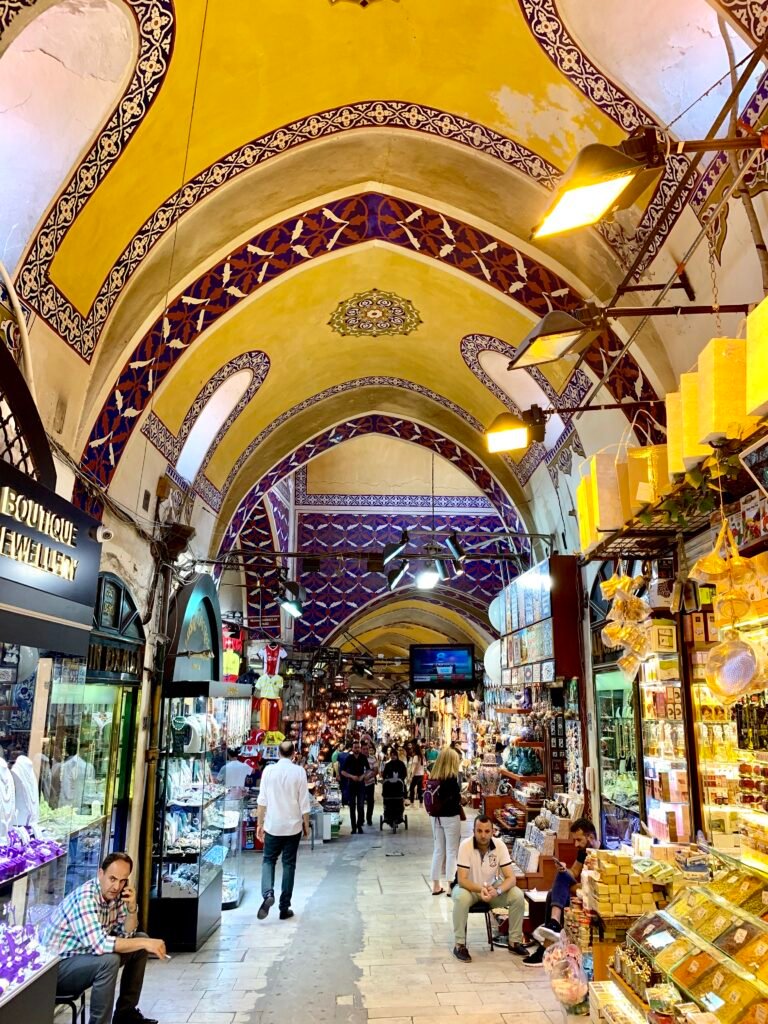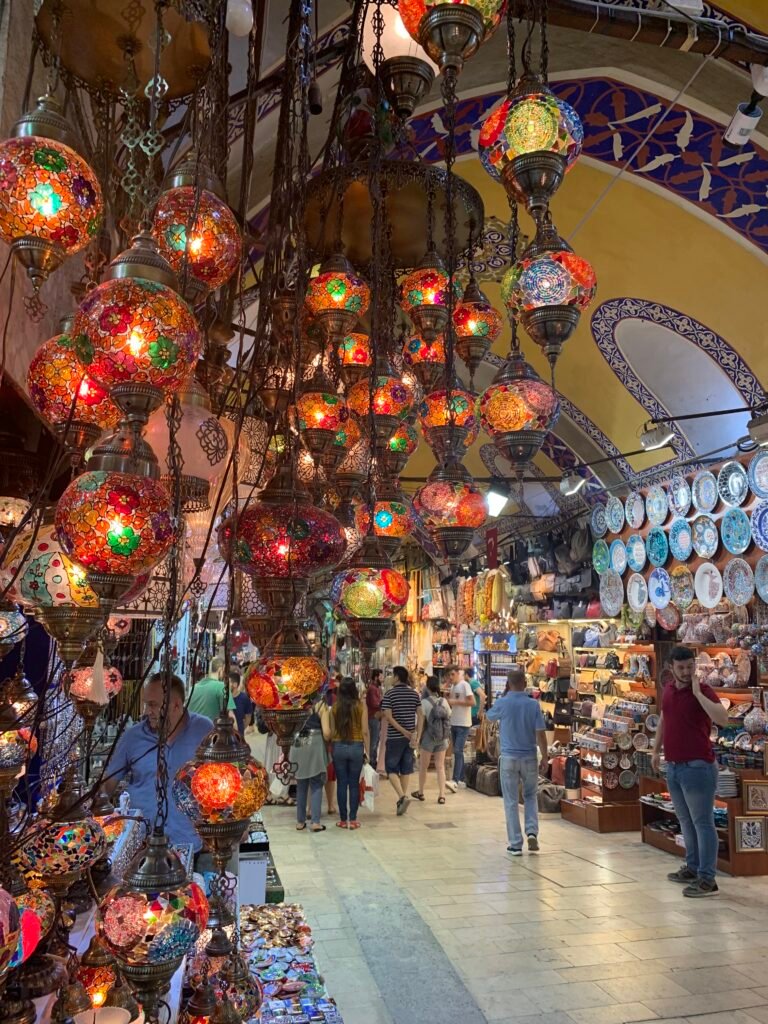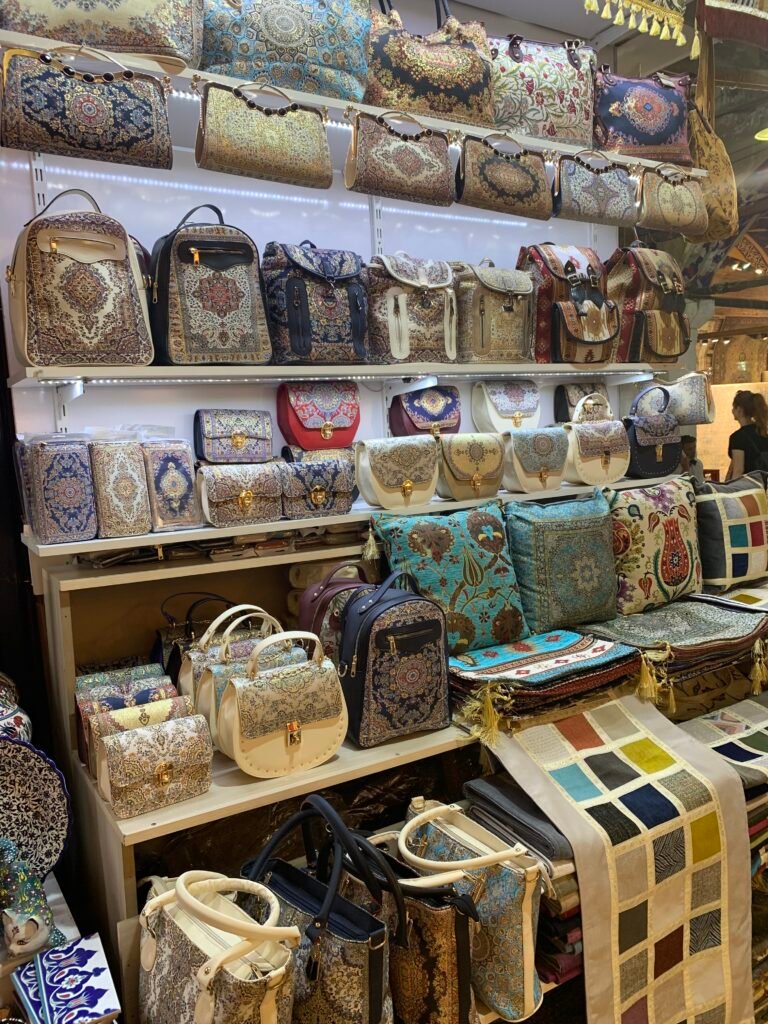Asian and European; Catholic, Muslim and Jewish; Byzantine, Roman and Ottoman; Chaotic, dense and calm; Ancient and cosmopolitan… This is Istanbul, a city with more history, culture, personality, and contrast than most of the world.
Istanbul’s streets are fragrant with the smell of corn and chestnuts. The city displays a mosaic of colors in its mosques, women’s veils, and beautiful lamps. From the stores and restaurants, one can hear sensual music, and its favorite flavors are the pistachio for the famous baklava, and apple for its tea.
I stopped first in this city before my trip to Cappadocia. Honestly, I thought two days would be enough. What a huge mistake! I had not realized how enormous Istanbul was, full of mosques, temples, museum, markets, towers… and with population of 15 million people!

But wait! When one first arrives, the overpopulation, the noise, the chaos, the language, and the 95-degree heat is the worst welcoming combination. At least it was for me. After traveling on a bus for 90 minutes, and being scammed by a taxi driver who charged me a looot more money for the ride, I would say I kind of freaked out. OMG! Where did I arrive? Will I be safe? These were the questions that I kept repeating in my mind while waiting for my room.
“Don’t be afraid,” the receptionist told me, as he opened the big city map. After enlightening me of the landmarks and places to go, he emphasized that I would be safe and wouldn’t regret coming.
So I followed his advice, and started my short adventure to ancient Constantinople. And seriously, I had to hurry up! At that time, I only had day and a half.
One more time, it’s true! Don’t believe in first impressions. Once I was out of my hotel, I began to realize how beautiful the neighborhood, Sultanahmet, was. It was full of colors, with little streets, restaurants, cats, dogs… and the view of the two most important landmarks: Blue Mosque and Hagia Sofia church.
Hagia Sofia or Ayasofya

Two medallions in Arabic, dedicated to Ala and the prophet Muhammad, made me bristle. They were right next to Jesus Christ in the arms of the Virgin Mary. Was this the church where the first fusion of cultures and creeds was observed?
In the 3rd Century, it was first a Byzantine Orthodox Cathedral, then it became Catholic. In 1453, with the Ottoman conquest, it became a mosque, and only in 1935 did it finally become a museum.
Hagia Sofia is an architectural jewel, composed of an altar and magnificent chandeliers. It holds marble pillars from the Ottoman era, eight huge medallions with Arabic calligraphy, tiles, Byzantine mosaics, imposing columns, a huge dome and stained glass windows. All together they caused a visual ecstasy.

Its entrance is 60 lira, equivalent to 10 US dollars. And you can completely explore it in two hours.
Bosphorus by ferry

The sunset was approaching. I had read that the best view was from the Bosphorus, the strait where Asia and Europe shake hands. There was only a short time to choose a cruise. The simplest option was a ferry to cross to the other continent: the Asian district of Uskudar.
Ferries departed every 20 minutes and the ticket was less than 1 US dollar. They were spacious and comfortable. On the trip, the seagulls escorted us. It was the best place for a panoramic photo of the city, where the illuminated mosques, the lighthouses, the bridge, and the Galata Tower were framed.
Once back, it would have been unforgivable not to dine on one of the terraces along the Bosphorus and under the Galata bridge. Dozens of Turks would use their skills to convince us to stay in their restaurant.
The Blue Mosque

8 a.m.! I had few hours left to finish this journey. I went quickly to the Blue Mosque, the symbol of Muslim beauty and an icon of Turkey.
Also known as the Sultan Ahmed Mosque, the outside had an ascending staircase of domes and semi-domes that ended with a larger one. Inside, it was covered by 20 thousand handmade blue colored tiles.
The light entered through its 200 windows, and was decorated with verses of the Koran. The floor was covered with well-preserved carpets, of course you must enter without shoes and your head must be covered. Only Muslims have access to the prayer area, so the route can be short. The entrance was free.

The Topkapi Palace

The history and treasures of the Otoman Empire, which lasted about 500 years, were in the Topkapi Palace. It was giant, and its rooms portrayed the richness and extravagance of the sultans. There were rooms for their harems, their libraries, and their artillery. The imperial dagger was wielded with gold and emeralds. The palace also holds the fourth largest diamond in the world.
The Grand Bazaar
My favorite moment of the trip had arrived: shopping. How does one not to go crazy among the near 4,000 stores that encompass the Grand Bazaar? It’s impossible not to get lost among lamps, chandeliers, carpets, cushions, plates, cups, scarves, wallets, bags, jewelry…
It’s a mixture of the traditional, like amulets with eyes, and the modern, like the replicas of shoes, purses, and clothing, such as Chanel, Gucci, Versace and Louis Vuitton.
I wanted everything! And, with every step I took, the vendors didn’t make it easy for me. They tried to get my attention by inviting me for an apple tea, and trying to convince me to buy what I didn’t need.
In the Grand Bazaar, the bargaining culture was a priority. I squeezed that skill until I bought a bag, in which I was asked for 1,500 lire and finally paid only 500.
Galata Tower

The night came to Istanbul. Too late to go up to the viewpoint of the highest tower in Istanbul: the Galata, located in the European district Beyoglu. But, it was early enough to tour the immediate area.
Its streets were narrow and, being a hill, you had to climb stairs. Upon arrival, the imposing medieval tower welcomed me with illuminated blue and orange colors.
Around it, music, art and traditional dishes merged. Inevitably, I delighted in the traditional sweet baklava and my last Turkish tea in this city. All the while contemplating the magnitude of the tower.
To return to the hotel in Sultanahmet, the fastest way was with the tram. It is safe, convenient and the ticket was worth less than 1 USD. Of course, I would be lying if I said that I understood how the ‘Istanbulkart’ worked. The directions were in Turkish, but I was lucky that there was always someone willing to help me.
This was how, and almost without feeling in my feet, I squeezed out my two days in this monumental city. I failed to reach the Egyptian Bazaar, the Asian neighborhoods, the history museum, or the other mosques. They will be the reminder that I must return someday. With more time and with more bags to take all the lamps with me.















